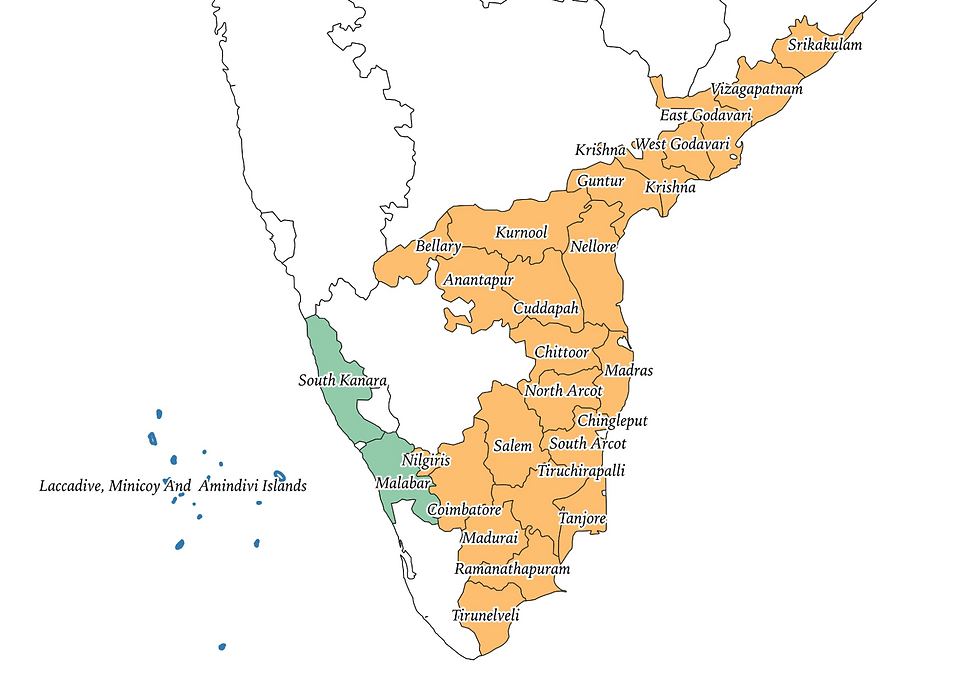Lakshadweep
- indiastatestories
- Oct 11, 2024
- 2 min read
Updated: Jan 25
The story of the Lakshadweep Islands, nestled in the Arabian Sea, is a lesser-known chapter in India's history. Once ruled by various dynasties and later by the British, these beautiful islands eventually became a peaceful Union Territory, marking their unique place in the nation's narrative. It consists of thirty-six islands, categorized into three subgroups: Aminidivi, Laccadive, and Minicoy Islands. Historically, these islands were part of the Chola dynasty during the medieval period and later came under the rule of the Kingdom of Cannanore.
Afterward, the region was ruled by the Muslim House of Arakkal, though the Aminidivi Islands were ceded to Tipu Sultan. Following the fourth Anglo-Mysore War in 1799, the Aminidivi Islands were annexed by the British East India Company and administered from Mangalore. By 1854, the remaining islands also came under British administration.
During the British rule, the islands were not administered as one unit. The northern Amindivi subgroup was administered from South Canara, while the Laccadive and Minicoy subgroups were administered from Malabar under the Madras Presidency. When India gained independence in 1947, the islands were transferred to India and continued to be administered by South Canara and Malabar under the newly formed Madras State.
The turning point came in 1953 when the States Reorganisation Commission (SRC) was constituted to reorganize state boundaries. In its 1955 report, the SRC recommended merging South Canara with Mysore State and Malabar district with Kerala. To simplify administration, the commission suggested that the Amindivi subgroup be brought under Kerala's control, which would also take over the administration of Laccadive and Minicoy after Malabar’s transfer.
However, the Indian government decided to place the Lakshadweep Islands directly under the President of India, who would govern the territory through an administrator. This was primarily due to two factors: (i) long-term naval interests in the region, as articulated by K.M. Panikkar at the time of India’s independence, and (ii) concerns over a possible communist regime in Kerala and its implications for the islands.
In 1956, with the enactment of the States Reorganisation Act, the union territory of Laccadive, Minicoy, and Amindivi Islands came into being. Later, as relations with the islands improved, the Administrator’s Advisory Council suggested renaming the islands as Lakshadweep. This change was formalized when Parliament passed the Laccadive, Minicoy, and Amindivi Islands (Alteration of Name) Act on 26 August 1973.
Sources:
Administrative Atlas of India (2011)
Origin Story of India’s States (2020) @venkataraghavns
We the People of the States of Bharat (2022) @ChopraSanjeev




コメント